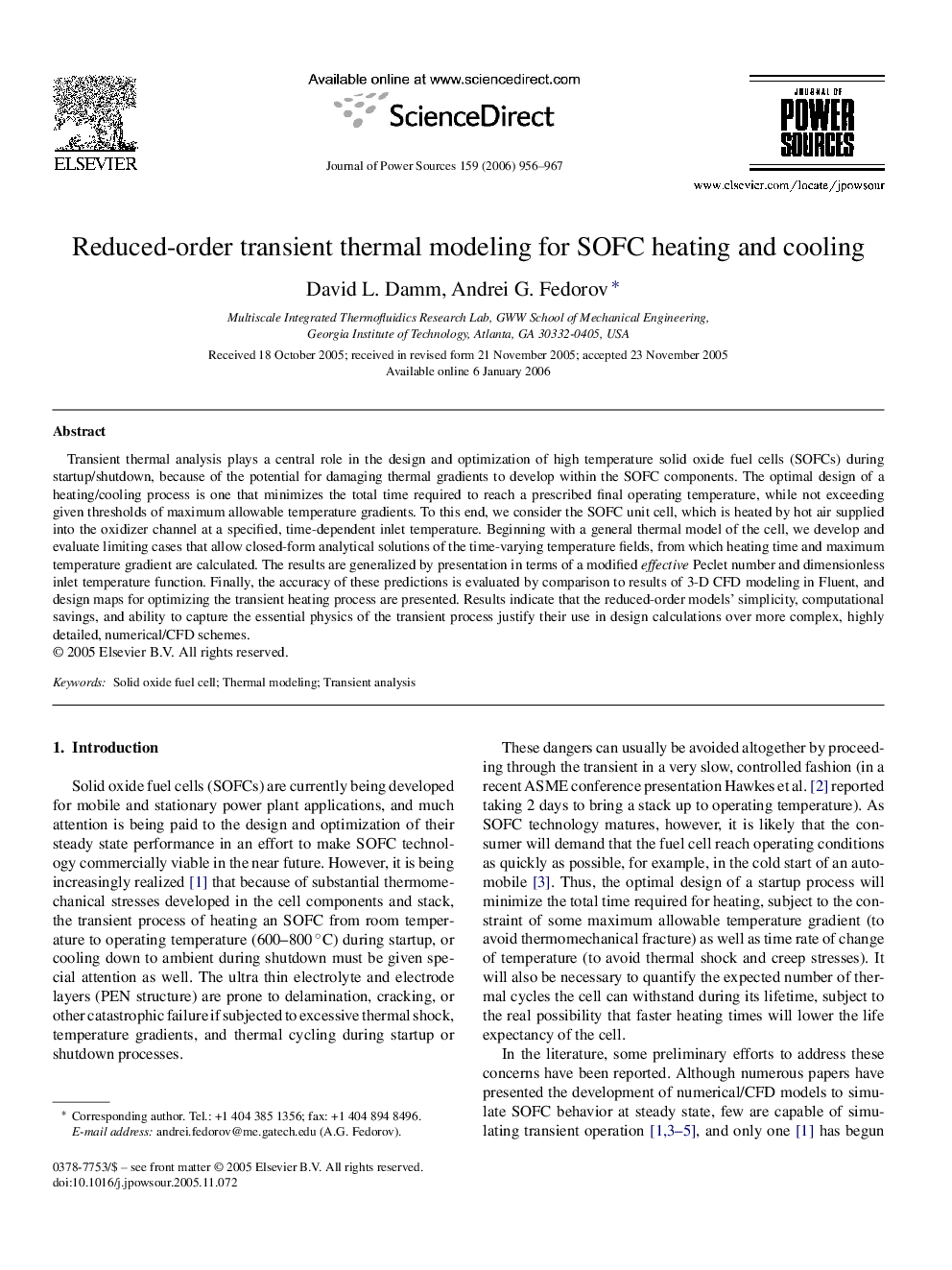| Article ID | Journal | Published Year | Pages | File Type |
|---|---|---|---|---|
| 1287248 | Journal of Power Sources | 2006 | 12 Pages |
Abstract
Transient thermal analysis plays a central role in the design and optimization of high temperature solid oxide fuel cells (SOFCs) during startup/shutdown, because of the potential for damaging thermal gradients to develop within the SOFC components. The optimal design of a heating/cooling process is one that minimizes the total time required to reach a prescribed final operating temperature, while not exceeding given thresholds of maximum allowable temperature gradients. To this end, we consider the SOFC unit cell, which is heated by hot air supplied into the oxidizer channel at a specified, time-dependent inlet temperature. Beginning with a general thermal model of the cell, we develop and evaluate limiting cases that allow closed-form analytical solutions of the time-varying temperature fields, from which heating time and maximum temperature gradient are calculated. The results are generalized by presentation in terms of a modified effective Peclet number and dimensionless inlet temperature function. Finally, the accuracy of these predictions is evaluated by comparison to results of 3-D CFD modeling in Fluent, and design maps for optimizing the transient heating process are presented. Results indicate that the reduced-order models' simplicity, computational savings, and ability to capture the essential physics of the transient process justify their use in design calculations over more complex, highly detailed, numerical/CFD schemes.
Related Topics
Physical Sciences and Engineering
Chemistry
Electrochemistry
Authors
David L. Damm, Andrei G. Fedorov,
